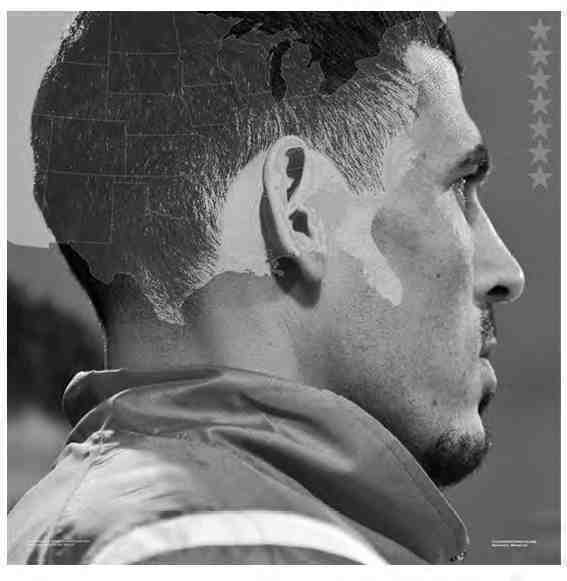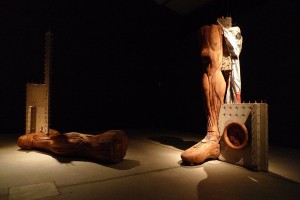Flash Points contributor and University of Riverside professor Jennifer Doyle is currently spending 2 weeks in India, traveling with the Indian artist Riyas Komu. Following is the third in a series of dispatches from the road. — Ed.
Iraq’s victory over Saudi Arabia in the 2007 Asia Cup final is likely to hold up as one the decade’s most significant wins. The team’s victory represented a complex distillation of resistance and anger. The torture and murder of Iraqi athletes is frequently cited in the litany of horrors suffered by the Iraqi people at the hands of Saddam Hussein (see this 2003 Sports Illustrated story). Responding to allegations of torture in the country’s soccer program, in 1997, FIFA investigated the architect of Iraq’s athletics program, Uday Hussein, but spoke only with his people and wrote a report exonerating the sadist. Interest in the plight of the country’s people has long been guided by questions of political expediency. These athletes know intimately what it is to have one’s body enlisted in the service of the state, and are wary at best about having their experiences drafted into discourse defending the US invasion and occupation of Iraq. On winning the cup, while a frantic official stood next to him shouting, “No Politics! No Politics,” captain Younis Mahmoud said, simply: “I want America out of Iraq now!”
Drawn to the team by the Asia Cup victory and the captain’s powerful statement, in 2007, Indian artist Riyas Komu went to watch one of Iraq’s World Cup qualifying matches. At the time, these matches were played in Dubai; this was the period during which the team had been forced into exile (they’ve only recently returned to play in Iraq, with an inaugural match played against another dislocated team, Palestine). Inspired by this experience, Komu made a series of works that elliptically but powerfully tap into the contradictions that swirl around the team, and around the body as an instrument of nationalism more broadly.
Komu’s Iraq Project is a serial work which encompasses photographs of the team and its spectators, paintings and prints based on those images, and a series of sculptures of left legs — strange amputated and distressed objects, intricately carved in surreal anatomical detail from salvaged teak by migrant artisans from Kerala (the region from which Komu himself hails). The legs are skinned, tendons, muscle and ligament spiral down to the foot clad in football boots.
These legs have since been integrated into the mythic alphabet from which Komu assembles his works — they are in conversation with five-pointed stars, intricate patternwork, the head and brain, coffins, crutches, and miniaturized temples. Everything looks familiar but dislocated, like folkloric and national symbols that have been hijacked and repurposed. In Last Pass, for example, four legs become pall bearers, carrying a cage, a temple, a coffin — a space waiting for a body. Laced throughout much of Komu’s work is the sentimental texture of mourning. Komu explains, “the present is carrying the burden of the dead, and the future is nowhere in sight.”

Riyas Komu, "Last Pass," installation with wood and metal, 2008
In scheduling our work in India, Komu and I had hoped to attend a friendly match between India and Iraq. FIFA suspended Iraq for “governmental interference” in its football program, and so the match was canceled. The punishment is directed at Iraq’s Olympics Committee, which took over the Football Association; basically, the latter had declared the country too unstable for them to hold their local elections. (Athletes and sports officials are vulnerable to insurgent attacks as well as kidnapping for ransom, etc.) As Rod Nordland and Sa’ad Al Izzi point out in their New York Times article on the subject:
It is hard to persuade investors to spend their money here, if even the country’s football association declares it too dangerous to hold its elections here. (“Soccer in Iraq: Another Field for Argument“)
And so we play another round of political football.
Komu stages his work in these overdetermined spaces — spaces in which it seems impossible to move, and yet people do. Iraq Project pushes up against “war and carnage tourism.” It asks (and answers) how one makes art from a subject like the US invasion and occupation of Iraq. The works collectively bridge the dynamic of hope and uplift of Mark Him with the violent past and present that surrounds this team and the region. It is an ambivalent collection of works: photographic images of exhilaration alternate with sculptures which seem to memorialize the athlete’s body, to embody loss and pain. It seems to me as though Komu approaches the body from the outside, and from the inside, capturing not only what it feels like to be in the stands as spectators to that body’s struggle and its glory, but also what it feels like to be in that athlete’s body — pinned by so many contradictory investments in the athlete’s gesture, in the meaning of each victory and each defeat.








Pingback: Political Football « Scissors Kick